In the 120th Paris-Roubaix, which proved both memorable and historic (fastest edition of all time), Stefan Küng totally held his own on Sunday. The Swiss rider was right up there when the big fight started more than a hundred kilometres from the finish in the Haveluy and Trouée d’Arenberg sectors. Alongside the day’s main favorites, the Groupama-FDJ leader remained in the leading group until the decisive Carrefour de l’Arbre. In this section, Mathieu van der Poel soloed to victory, and Stefan Küng fought hard behind to reach the velodrome in fifth position. After the Tour of Flanders last Sunday (6th), “King Küng” obtained his second top-10 in two Monuments this season.
Third Monument of the season, Paris-Roubaix also represented the end of the cobbled Classics’ 2023 great campaign. The “Queen of the Classics”, the most “cobbled” of them all, and arguably the most iconic, was tackled by 175 warriors on Sunday, between Compiègne and Roubaix. A total of 54.5 kilometres of cobblestones spread over twenty-nine sectors awaited the bunch from kilometre 100, but before that, many competitors wanted to anticipate the main battle. There were so many that it took almost two hours for a quartet to really take the lead. Jonas Koch (Bora-hansgrohe), Derek Gee (Israel-Premier Tech), Sjoerd Bax (UAE Team Emirates) and Juri Hollmann (Movistar) did find themselves at the front, but never actually enjoyed a large lead. The peloton let them just two minutes, which contributed, together with tailwind, to a crazy average speed over the first two hours of racing. “The break went fifteen kilometres before the cobblestones, and since the approach to the cobbles is always nervous, it actually was always fast”, said Frédéric Guesdon. “Miles and Jake were supposed to protect Stefan in this first part of the race, while Sam simply had to be vigilant if a big move went approaching the cobbles”. While a few crashes occurred in the first sectors, the Groupama-FDJ team proved relatively spared at first. On the other hand, their Swiss leader was forced to change bikes 130 km from the finish. “He had an issue with the seatpost, which dropped a little on the third sector”, explained Frédéric. “The bike change took quite a long time because we were behind several groups. They had to change bikes between them, just before we helped him out, but we didn’t do too badly. There were guys to help him and we didn’t lose a lot of time”.
“I gave my best, but I was just completely empty in the end”, Stefan Küng
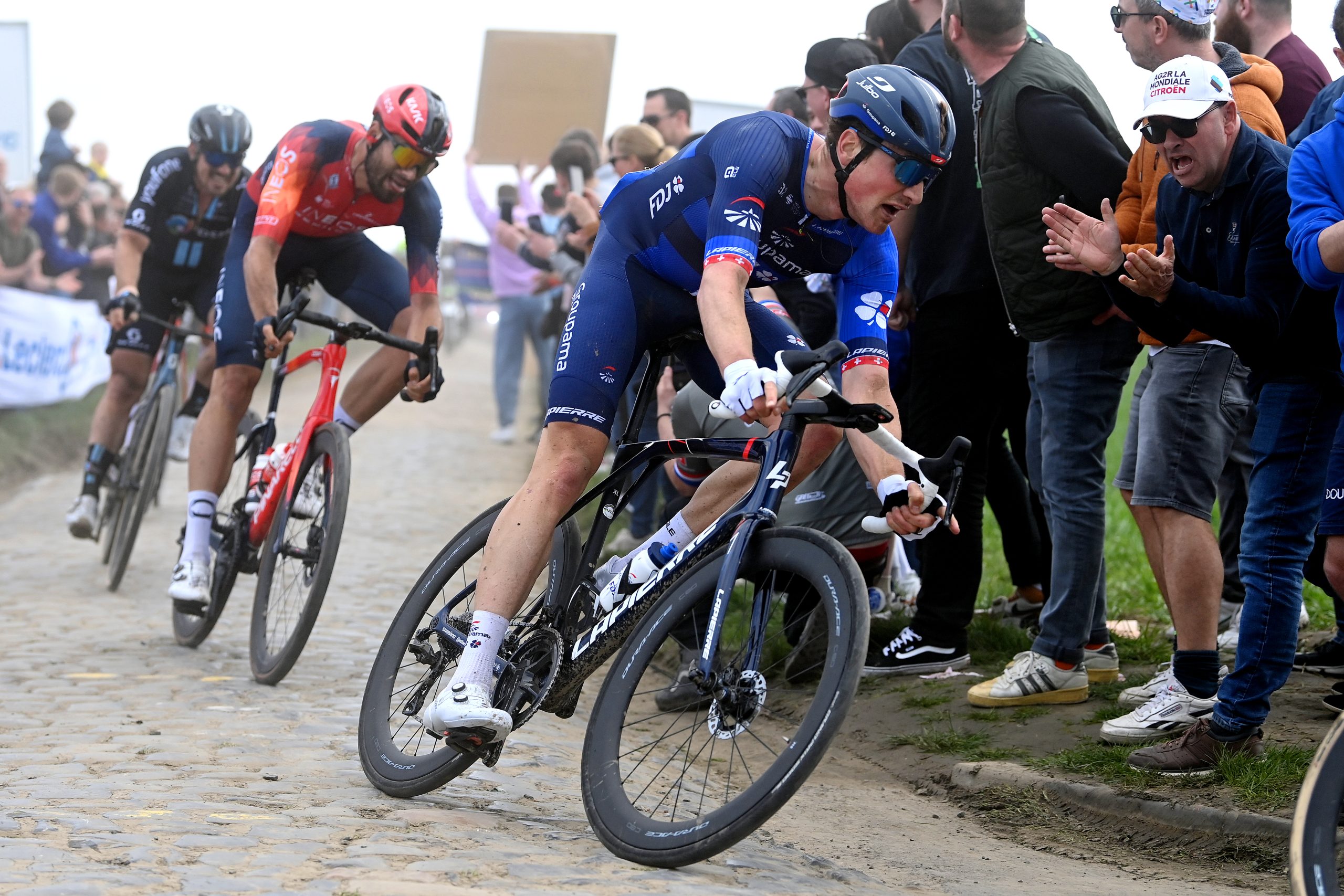
Stefan Küng re-joined the pack before a series of three sectors, then moved back to the front positions ahead of sector number 20 from Haveluy to Wallers. Right before this crucial point, Miles Scotson also launched an attack and found himself thirty seconds ahead of the bunch. “He talked with Stefan and found a gap to take a step ahead”, said Frédéric. “The goal was not to leave Stefan alone and to have guys to place him before Haveluy, and they were all there. If we could get past Arenberg with a guy in front to help Stefan, that was ideal, and that’s why we let Miles go.” Behind the Australian, the time trial specialist was perfectly placed by his teammates entering Haveluy, and this proved to be a decisive move for the rest of the day. “Jumbo-Visma pushed very hard at that point, and the race started from there,” said Stefan. “We were a hundred kilometres from the finish, and from then on it was full gas until the end”. Led by Samuel Watson on the first part of the sector, the Swiss rider then made a huge effort to join Christophe Laporte, Wout Van Aert, Mathieu van der Poel and John Degenkolb. With them, he took a small margin over the rest of the competition, with the Trouée d’Arenberg coming up. “We knew that the Haveluy sector was going to be fast, because it is always an important place before Arenberg, but we weren’t really expecting the decisive move to go there”, confessed Frédéric. “This shows that we must always be careful. From kilometre 0 to the finish, a lot can happen at any time.” In the Trouée d’Arenberg, an iconic spot of the Hell of the North, this small group of favorites caught the breakaway, before it was joined by other strong men such as Mads Pedersen, Filippo Ganna or Jasper Philipsen. Laporte, on the other hand, was distanced after a puncture.
With 90 kilometres remaining, a group of thirteen riders clearly stood out from the rest and quickly took a two-minute lead over the “bunch”. Some counterattacks happened after, but the leading group always maintained a solid pace, which also reduced it to seven riders at the end of the tough sector of Mons-en-Pévèle, forty kilometres from the line. There, Mathieu van der Poel launched a first powerful attack, which put his rivals in trouble before the group reunited a few moments later. Entering the final, Küng still had to face the Dutchman, Van Aert, Pedersen, Ganna, Degenkolb and Philipsen. “We had to manage our effort, be very vigilant in certain sectors, then we knew that the legs would make the difference in the Carrefour de l’Arbre”, added Frédéric. It was indeed there, seventeen kilometres from the finish, that everything was decided. A crash from Degenkolb first created a split, then Van Aert and Van der Poel took the lead together, before the Belgian suffered a puncture. A few metres behind, Stefan Küng could not get involved in this battle. The Swiss rider found himself in a third group with Ganna, and then Pedersen in the very last kilometres. Less than a minute after Mathieu van der Poel, winner of the race, he arrived fighting for fourth place but finally took fifth on the line. Out of breath. “It was again a very, very hard race,” said Stefan. “As we saw, all the riders were cooked in the end, and there was nothing more I could do. I fought with my skills and I gave my best, but I was just completely empty in the final while others still had that extra energy. I can thank my team for protecting me well in the first part of the race, and we will come back”.
“Stefan deserves to win a big one”, Frédéric Guesdon
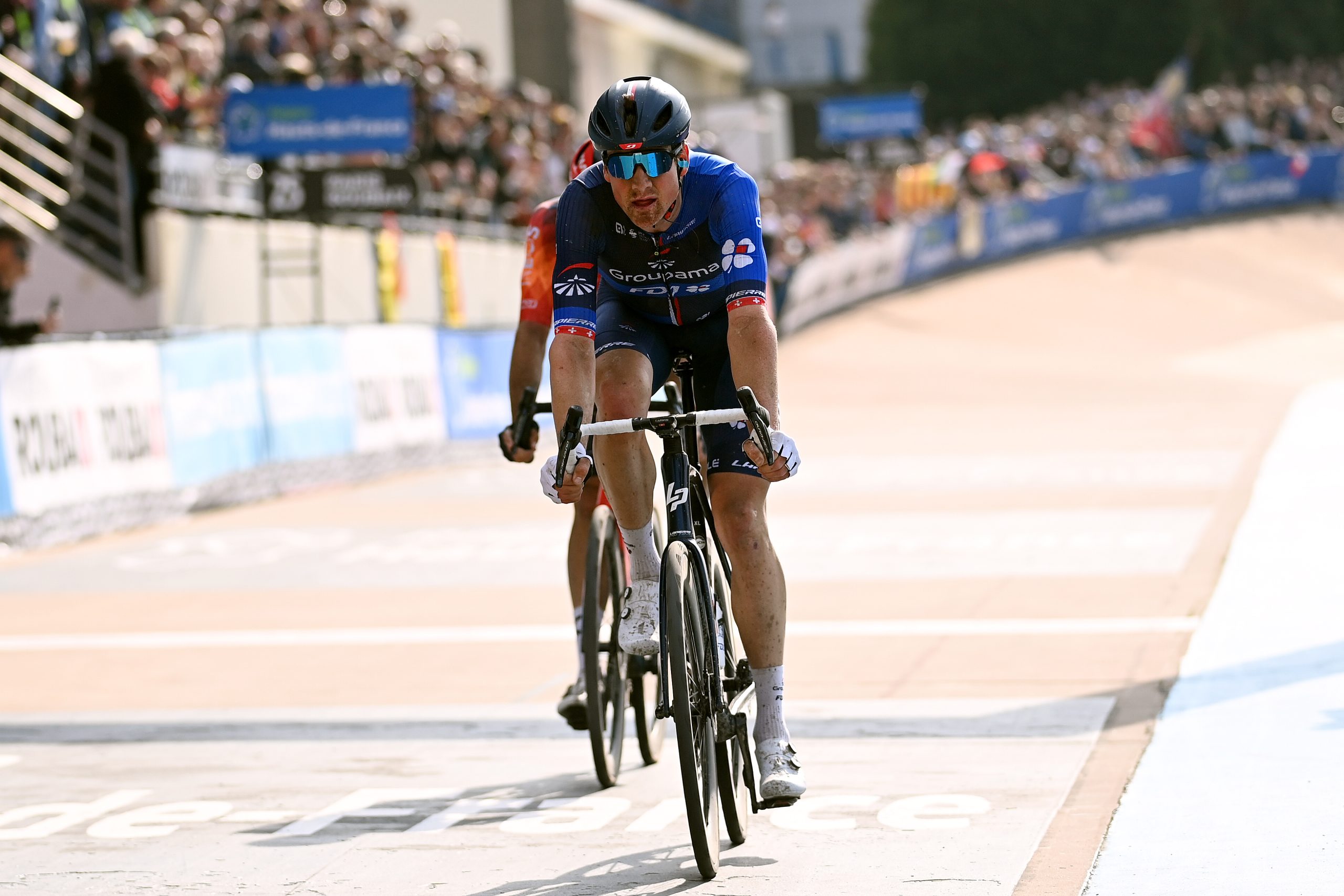
A year after climbing on the third step of the “Hell of the North”, Stefan Küng was therefore quite content with a very convincing top-5 in this insane 120th edition, with a record average speed (46.8 km/h). “The strongest were clearly in front”, judged Frédéric. “Considering how the race unfolded, he couldn’t do much better. It really came down to the legs and we can’t have any regrets. This fifth place still confirms his third place from last year and his last good Classics. We see that he is up there, and we hope that he will come back to win. He rarely misses, but he now deserves to win a big one. He’s always in the first positions, and it is time for victory to come”. “I hope it will work out in the future”, slipped Stefan again. “We will keep working. It’s always very satisfying to be in front, but I hope that one day I can be as strong as Mathieu van der Poel was today”. The Swiss rider anyway confirmed his status as a top rider in the Classics, a week after a convincing sixth place in the Ronde. The Groupama-FDJ team also concludes its cobbled Classics campaign with a top-10 on each of the two Monuments, and a double top-10 on the E3 Saxo Classic. “We hoped to do better than last year, but we knew it was going to be hard because we had performed really well with a podium in Flanders and Roubaix”, recalled Frédéric. “I think we still succeeded in our campaign, we confirmed our performances from last year and it’s quite positive. We would have liked to win or make a podium, but the level was extremely high. It proved a little less successful than last year but we are still up there”. In a week, the “Ardennes” group will take over for the Amstel Gold Race. As for Stefan Küng, he will now take a well-deserved break before returning to competition next month on the Giro d’Italia, where he’ll especially target the time trials.
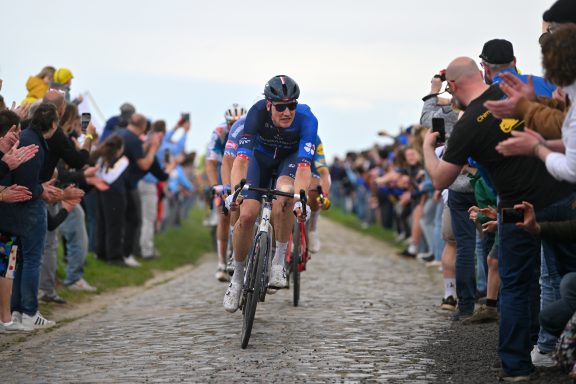
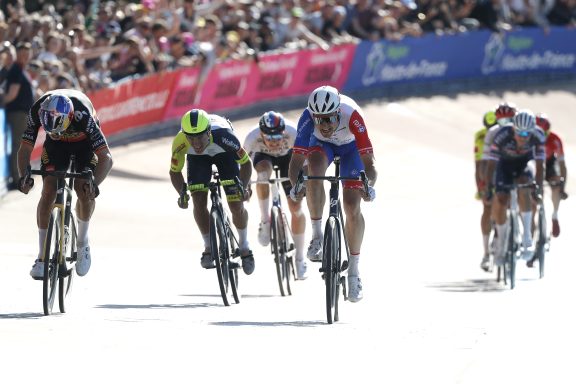
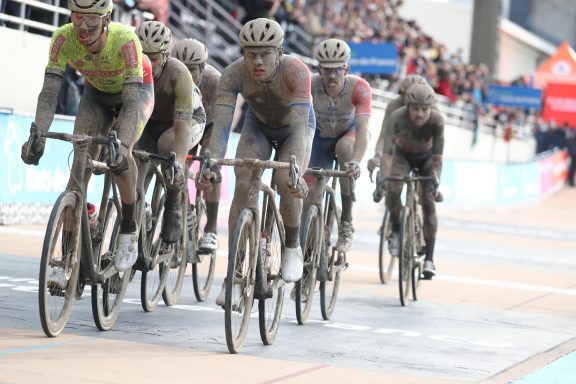
No comment